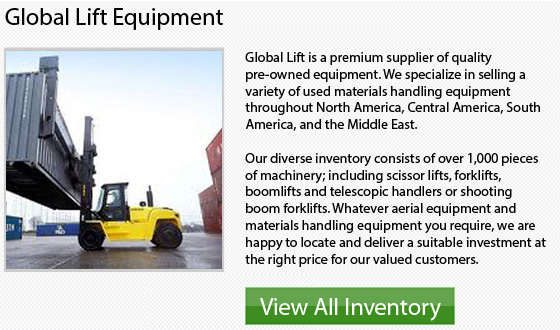
Forklifts are used to raise, engage and transport palletized loads within manufacturing, warehousing, material handling, construction and mining applications. There are 3 main types of lift trucks: a motorized drive, fork truck and manual drive. The travel or load movement is powered manually or by walking at the rear of the machine with manual-drive lift trucks.
Motorized-drive model lift trucks are complete with a motorized drive. In a lot of instances, a seat or protected cab is part of the design to keep the operator comfortable and safe. Fork trucks are a different type which are motorized and comprise features like for example backup alarms and cabs. In order to prevent the machine from overturning, some lift trucks are counterbalanced. Other models consist of safety rails, a rotating element like for instance a turntable or different kinds of hand rails.
Essential specifications to take into account when selecting forklifts include lift capacity and stroke. Stroke is defined as the difference between the fully-lowered and the fully-raised lift positions. Lift capacity is the supportable, maximum load or forcforce or load. Additional specifications for lift trucks include their type of fuel and tire.
Forklifts comprise different fuel options such as: LP or liquid propane, compressed natural gas or CNG, propane, diesel fuel, natural gas and gasoline. There are 2 basic types of tires utilized for operating forklifts and fork trucks: pneumatic and solid. Cushion or solid tires do not puncture and need less maintenance than pneumatic tires. The solid or cushion tires do provide less shock absorption overall. Air-inflated or pneumatic tires however provide excellent drive traction and load-cushioning.
There are 7 classes of lift trucks. The first class of forklifts, Class I, is either stand-up or seated 3 wheeled units which are electric-motor rider trucks. Normally, rider units could have either pneumatic or cushion wheels and are counterbalanced. Class II forklifts are electric motor units which are utilized for order picking or stock applications in narrow aisle environments. These models provide extra reach functions or swing mast.
Forklift Class III lift trucks consist of standing-rider or walk-behind operated electric-motor trucks. Automated pallet lift trucks and high lift models are normally counterbalanced units. Class IV forklifts have cabs and seated controls. These kinds of forklifts are rider fork trucks with internal combustion or IC engines. In addition, this class uses solid or cushion tires.
Rider fork Trucks are incorporated in Class V. These machines would have cabs and seated controls, pneumatic tires and internal combustion or IC engines. Like Class IV forklifts, they are typically counterbalanced. Class VI lift trucks are tow tractor lifts which are designed for a sit-down rider. This class is supplied with IC or internal combustion or electric engines.
Class VII lift trucks are the last classification and include rough terrain forklifts, that are commonly used in logging, agricultural and construction applications. Class VII forklifts consist of all burden carriers and personnel carriers.